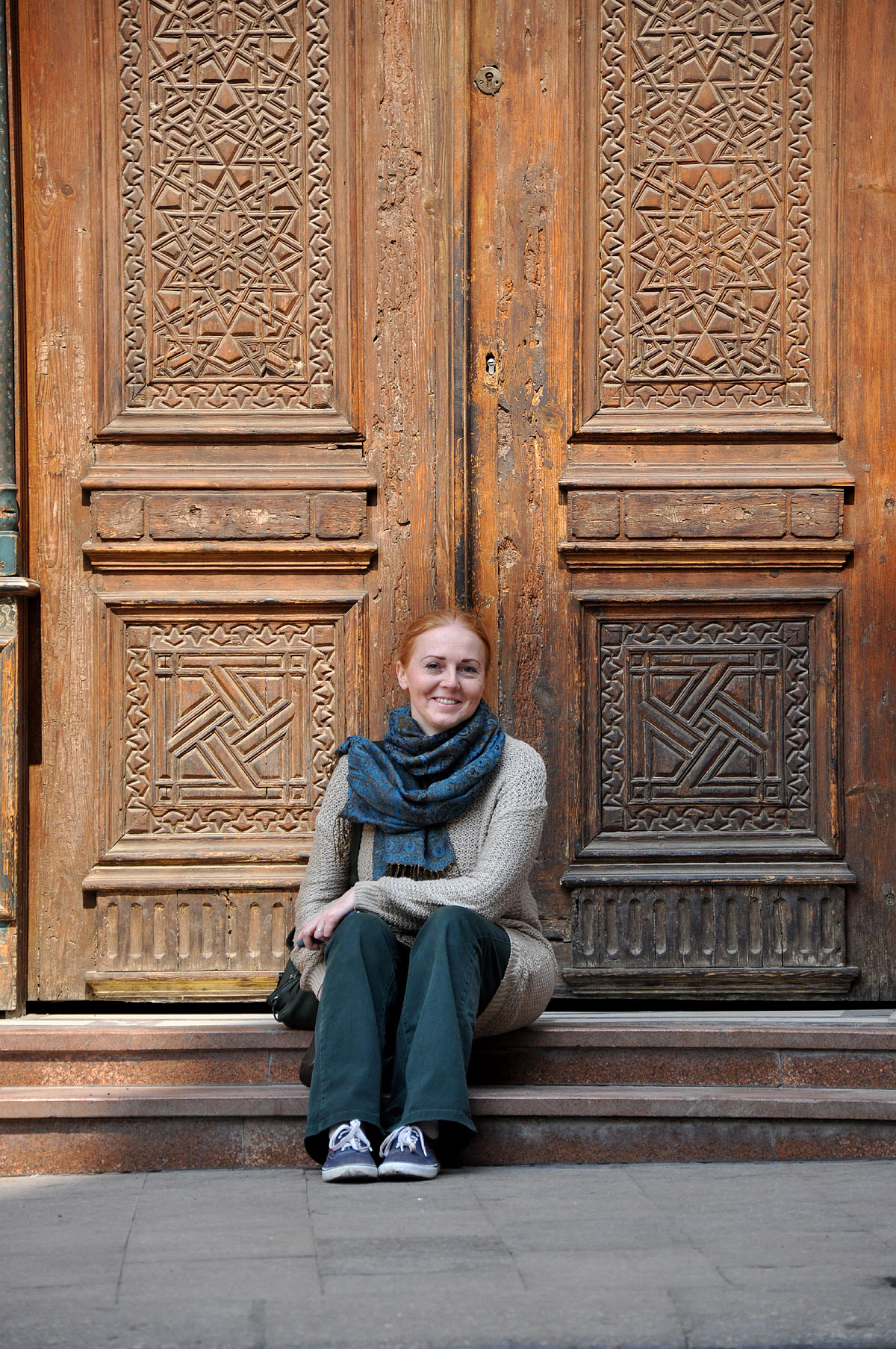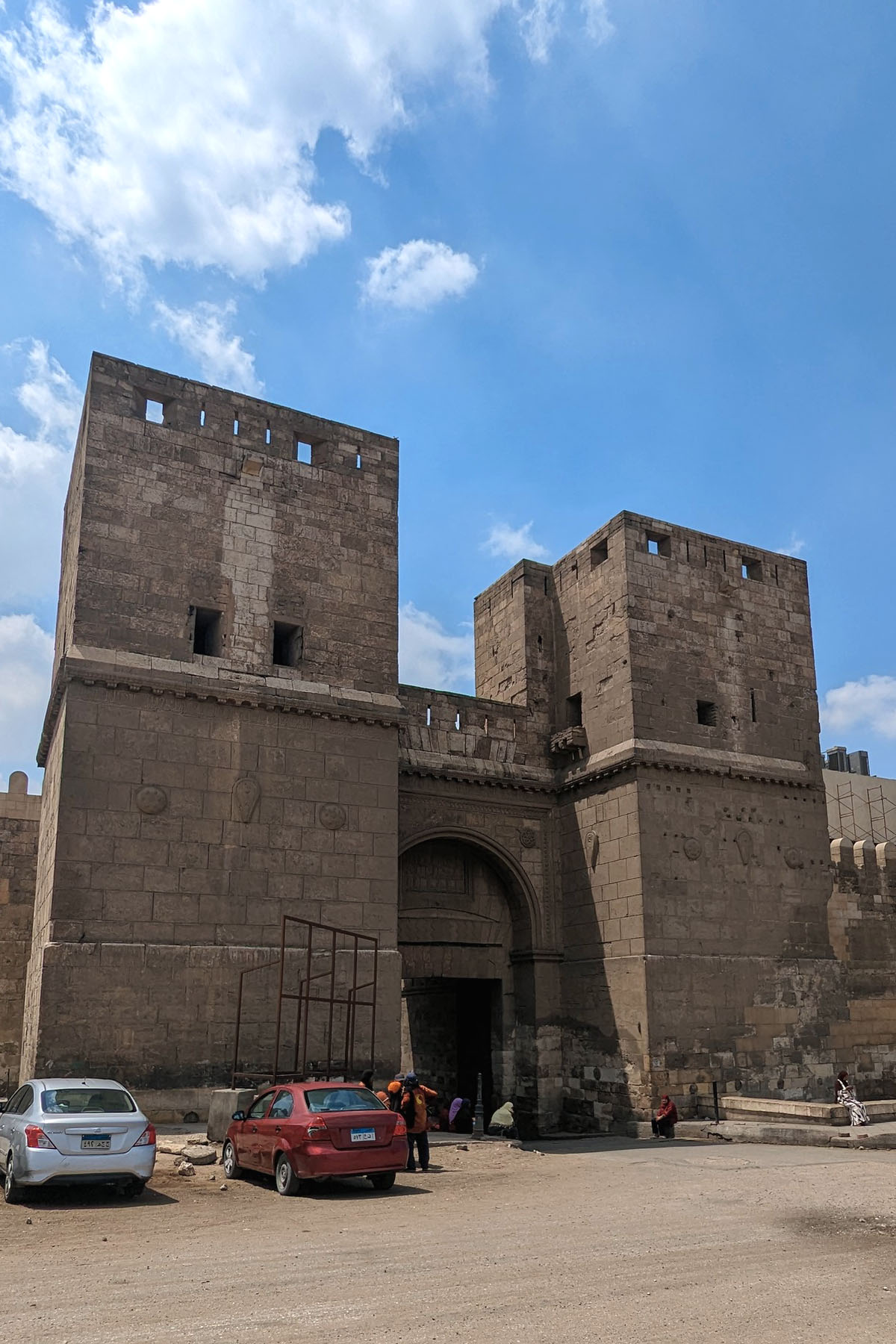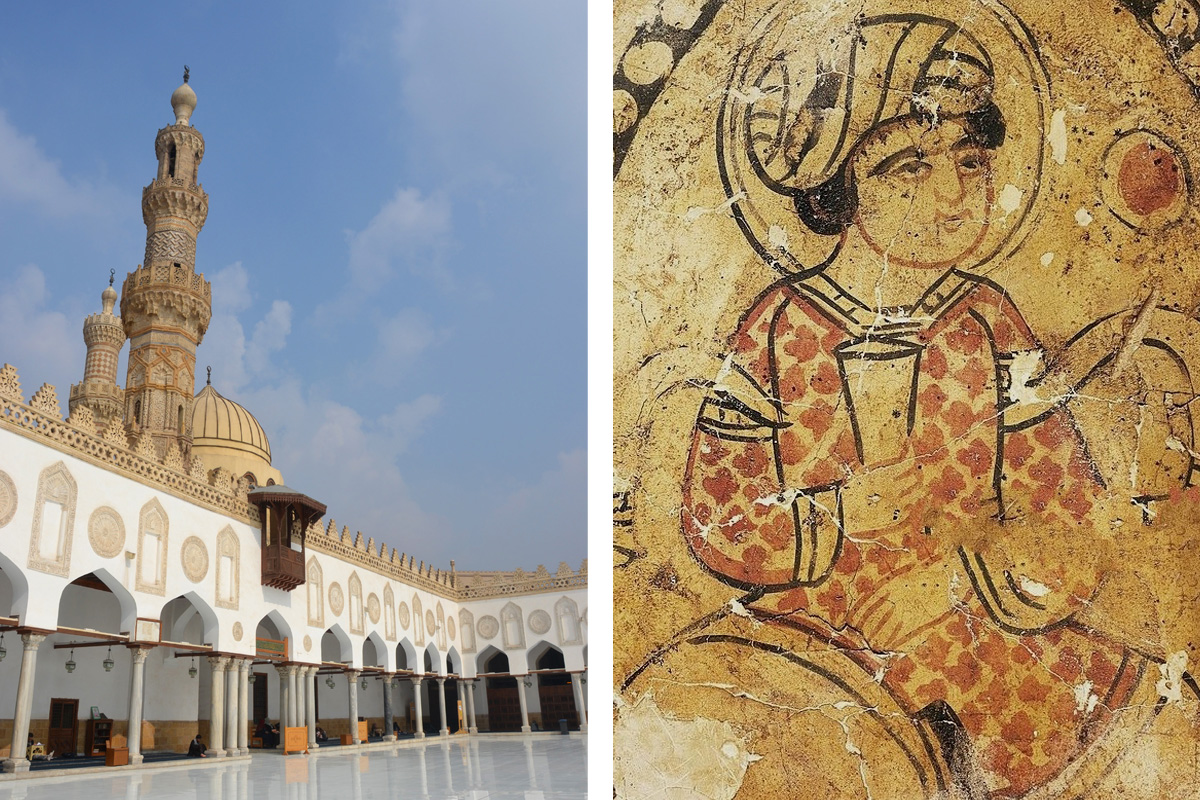Bab al-Nasr: An Ultimate Visitor’s Guide
5 min readBab al-Nasr is a beautiful 11th-century gate that’s a must-see on your Moez Street itinerary.
It’s one of a few remaining gates in the historic city wall that once enclosed medieval Cairo and protected it from invaders.
And it has a dramatic history and some fascinating architectural details.
Though Bab al-Nasr is often overlooked by visitors. And many travelers head straight to the nearby Bab al-Futuh to begin their tour of Islamic Cairo. Don’t make that mistake!
I’m a longtime expat living in Cairo and I love exploring the mosques, madrasas and historic homes of Islamic Cairo.
And this is my ultimate guide to Bab al-Nasr and the surrounding area.

It includes my insider tips, hidden details and everything you need to know to appreciate this overlooked gem.
How to visit Bab al-Nasr

I highly recommend Bab al-Nasr as a starting point for your walking tour of Moez Street and Khan el Khalili.
Bab al-Nasr stands on a wide, busy street (Al Banhawi) that makes an easy drop-off point for Uber drivers. Moez Street is pedestrian only so you’ll need to get dropped off at Bab al-Nasr and continue into Moez Street on foot.
Start at Bab al-Nasr and then walk over to nearby Bab al-Futuh and Moez (about 5 minutes away). Because this short stretch of road contains some of the most beautifully-preserved fragments of the old city wall that you won’t find in many other places.
A walk along this stretch of the wall also gives you a better appreciation of the enormity of Historic Cairo – and the scale of construction that was revolutionary for its day.
And although these walls were never really put to the test by invaders, they represent some of the finest Islamic military architecture before the Crusades.
The history of Bab al-Nasr
Bab al-Nasr (“Gate of Victory”) was built in 1087 by the Fatimids, a Shia dynasty that originated in Tunisia.
It’s called the Gate of Victory because it welcomed soldiers coming back to Cairo from their various conquests and wars.
Though there was actually an older, sun-dried brick version of the gate build in 969 when the city was first founded. But Fatimid vizier Badr al-Jamali decided to construct a more formidable new gate of stone that would better protect the city.
Jamali also renamed the gate as Bab al-Izz (“Gate of Prosperity”), but locals preferred the old name of Bab al-Nasr and that stuck.
Bab al-Nasr didn’t just keep out invaders. It also protected the Fatimids themselves from the local Egyptian population. It insulated the ruling class and the royal family from the common people of Cairo. And only servants, employees and soldiers of the Fatimids were allowed entry into this fortified city.
Who were the Fatimids?

The Fatimid Caliphate was a Shia dynasty originating from Tunisia that spanned the Mediterranean and eventually made Egypt the center of their rule. They traced their ancestry to the prophet Muhammad’s daughter Fatima and her husband Ali, the first Shia Imam.
Known for their religious tolerance, they nevertheless couldn’t convince the Egyptian population to adopt their Shia beliefs.
Fatimid art and architecture is known for lively figurative motifs and beautiful Kufic script in its Arabic inscriptions.
Bab al-Nasr: architectural details
Today, Bab al-Nasr looms over a busy road teeming with mini vans, tourist buses and vegetable vendors.
It’s in the working-class neighborhood of Gamaliya, a bustling district that is authentic and friendly despite the huge tourist attractions nearby.
It has two massive square stone towers with a connecting arch in the middle.
And it’s build strong for defense.
Here are some details you shouldn’t miss:
Arrow slits in the gate allowed soldiers to shoot projectiles at their enemies below. There were also living quarters inside the walls and towers, but these aren’t currently open to visitors.
The vaulted stone ceiling above (as you enter the gate) was very innovative for its time.
Shields and sword motifs (in raised relief) decorate the towers and symbolize victory against invaders.
Projecting towers let soldiers deliver flanking fire towards attackers.
An inscription that runs across the facade of the gate (above the shield motifs) praises Jamali and his caliph, and gives the date of the gate’s construction.
The rectangular inscription above the arch contains a Shia version of the Shahada, which lists Ali as an imam alongside Muhammed as a prophet.
There are also carvings with the names of Napoleon’s officers near the upper levels of the gate.
When Napoleon’s commanders took control of Bab al-Nasr, they renamed the towers after themselves and carved their names into the stone. The east tower was called Tour Courbin and the west tower was called Tour Julien.
Bab al-Nasr map
The gates of Medieval Cairo
Bab al-Nasr is one of three surviving gates of the city (there were originally eight).
The second surviving gates is Bab al-Futuh just a short walk away – a tall gate flanked by two enormous towers. Bab al-Futuh has beautiful stonework inspired by Syrian and Byzantine architecture. Look up as you’re passing and don’t miss it.
The third surviving gate is Bab Zuweila, which is all the way on the other end of Moez Street about a kilometer away. You can also climb to the top of Bab Zuweila for some great views of the old city.
Visiting Moez Street
Moez is a kilometer-long street lined with treasures of medieval architecture – from splendid mosques to historic homes and palaces. It starts about a 5-minute walk from Bab al-Nasr and it’s very worth exploring!
Moez Street is bustling with local vendors, street food wagons and mazes of narrow side streets where tall minarets peak out above the rooftops.
Moez Street is adjacent to the famous Khan el Khalili souq, a medieval bazaar that’s now a bustling tourist destination. It also has countless shops with handmade crafts and souvenirs.
Read Moez Street in Cairo: An Ultimate Local’s Guide for all my tips to explore this incredible street.
Islamic Cairo: An Ultimate Guide
Bab al-Nasr and Moez Street are part of a larger district known as Islamic Cairo, which is packed with treasures from the city’s medieval past..
Islamic Cairo is a UNESCO World Heritage Site dating back to the 7th century. And it holds one of the largest and densest concentrations of historic architecture in the Islamic world. It’s lined with splendid mosques, bustling souqs and sweeping city parks.
Read Islamic Cairo: A Walking Tour (+ Must-See Hidden Gems) for my ultimate guide.



